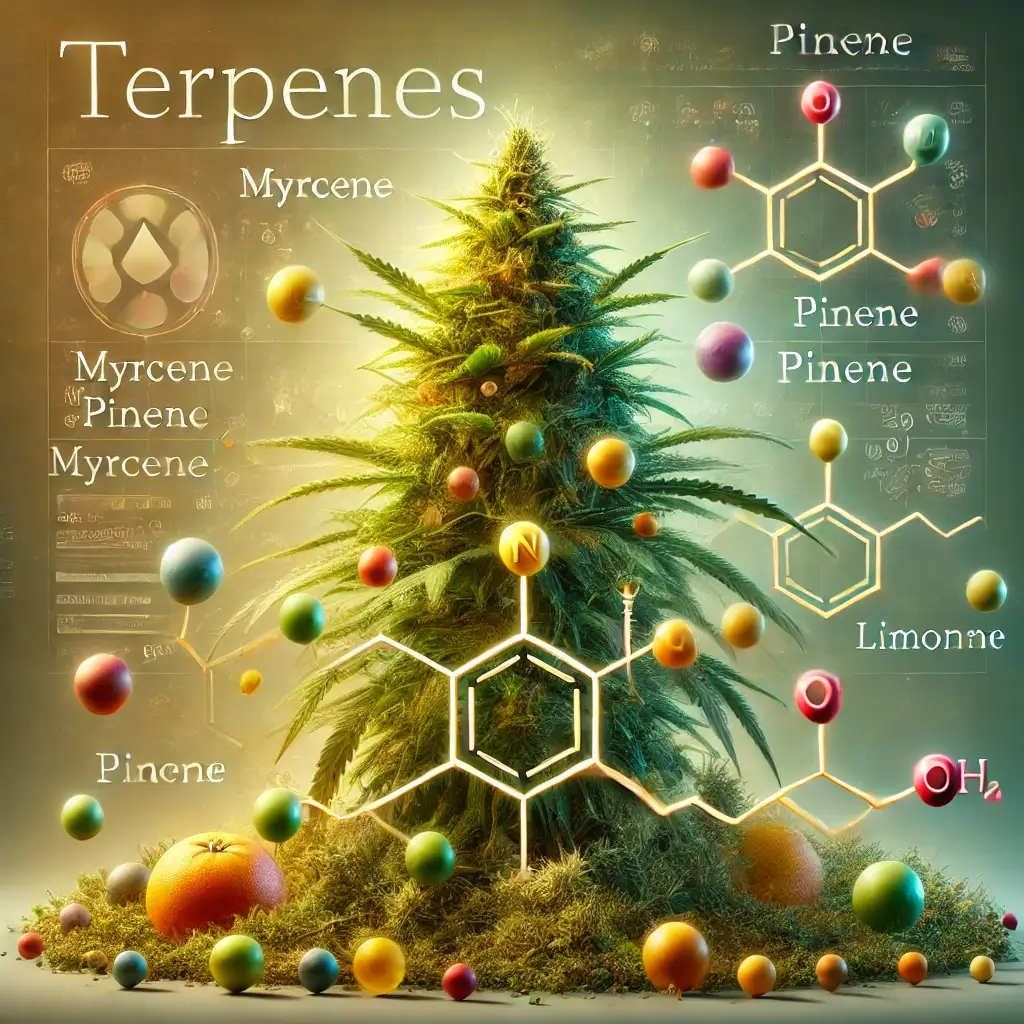Introduction to Cannabis Compounds
Cannabis has long been celebrated for its medical and recreational benefits, with much of the spotlight on its cannabinoids, THC and CBD. However, there is a growing awareness of therapeutic properties of terpenes, the aromatic compounds that give cannabis its distinctive scents and flavors. These compounds are more than just aromatic contributors—they hold immense therapeutic promise, influencing how cannabis interacts with the body.
Understanding Terpenes in Nature
Terpenes are naturally occurring organic compounds found in a wide variety of plants, including fruits, herbs, and flowers. In cannabis, they serve as a unique signature for each strain, shaping its aroma and contributing to its effects. For instance, strains with a citrusy scent often contain limonene for mood enhancement, while those with an earthy or woody aroma may be rich in myrcene for sedative qualities.
The Entourage Effect Explained
What makes terpenes truly fascinating is their role in the “entourage effect.” This phenomenon occurs when terpenes and cannabinoids work together to enhance each other’s therapeutic potential. For example, the combination of THC and specific terpenes can amplify pain relief, while CBD with limonene and linalool may reduce anxiety. As a result, understanding terpenes is critical for anyone seeking to optimize their cannabis experience.
Article Overview
This article delves into the science of cannabis terpenes, highlighting their health benefits, current research, and practical advice for leveraging these compounds. By the end, you’ll understand why terpenes are a key factor in tailoring cannabis to individual needs.
Exploring Common Cannabis Terpenes
While hundreds of terpenes exist, cannabis contains a unique subset that significantly impacts its therapeutic effects. Here’s an exploration of some of the most well-documented terpenes:
Myrcene Properties and Benefits
The most abundant terpene in cannabis, myrcene, has a musky, earthy aroma and is often associated with sedative effects. It is a staple in indica-dominant strains for insomnia relief, making it a favorite for those seeking relief from insomnia or chronic pain. Studies suggest that myrcene may increase the permeability of the blood-brain barrier, allowing cannabinoids to take effect more quickly and potently. This terpene also exhibits anti-inflammatory properties for therapeutic benefits.
Pinene Characteristics and Effects
Known for its refreshing pine scent, pinene exists in two forms: alpha-pinene and beta-pinene. Research shows that pinene offers anti-inflammatory and bronchodilator properties. For individuals with asthma, alpha-pinene may improve respiratory function, while its potential to counteract memory impairment associated with THC makes it valuable for cognitive health.
Limonene and Its Impact
Limonene is a citrus-scented terpene found in both cannabis and fruits like oranges and lemons. Its therapeutic effects include mood enhancement and stress reduction, and potential anti-cancer properties. In a study by Tisserand and Young (2014), limonene demonstrated anxiolytic effects, supporting its use for individuals managing anxiety or depression. This terpene is also a common ingredient in natural cleaning products with antimicrobial properties.
Beta-Caryophyllene Research
Unusual among terpenes, beta-caryophyllene interacts directly with CB2 receptors in the endocannabinoid system, making it a dietary cannabinoid. Found in black pepper and cloves, this terpene has shown promise in reducing inflammation and managing chronic pain, and even offering neuroprotective benefits. Its dual role as a terpene and cannabinoid makes it a focus of emerging research on terpene-based therapeutic applications.
Linalool Benefits and Applications
Linalool, known for its floral and lavender-like aroma, is recognized for its calming properties. It is often cited for its role in reducing anxiety and promoting better sleep. In studies, linalool demonstrated potential anti-epileptic and neuroprotective effects for neurological disorders.
Practical Applications of Terpenes
Understanding the therapeutic potential of terpenes can help consumers make informed choices. With many cannabis products now featuring detailed terpene profiles, it’s easier than ever to match cannabis strains to specific needs. For instance, if relaxation and sleep are priorities, strains high in myrcene and linalool are excellent options. On the other hand, limonene-rich strains for energy and mood enhancement may be ideal for uplifting and energizing effects.
Expert Recommendations
Experts recommend experimenting with different strains and products to discover what works best for your body. Consulting with a healthcare professional is also beneficial, particularly for medical cannabis users seeking personalized recommendations, as they can provide personalized recommendations based on your health conditions and goals.
Final Insights on Terpenes
Terpenes are a cornerstone of cannabis’s therapeutic potential, offering a diverse array of health benefits that complement cannabinoids like THC and CBD. By understanding these aromatic compounds, consumers can unlock the full potential of cannabis therapy. As research continues to uncover the complex interplay between terpenes and cannabinoids, their role in cannabis science and wellness applications will undoubtedly expand.
